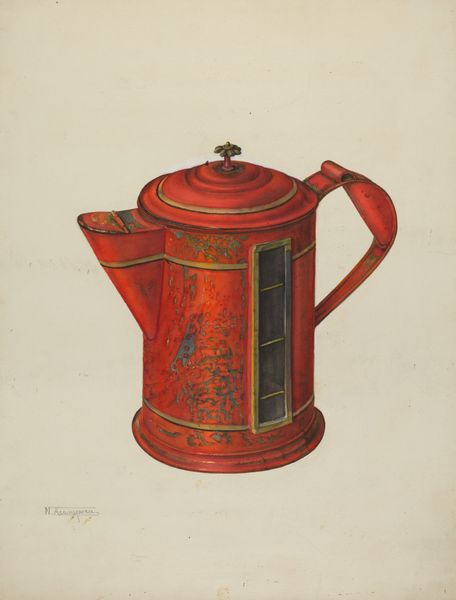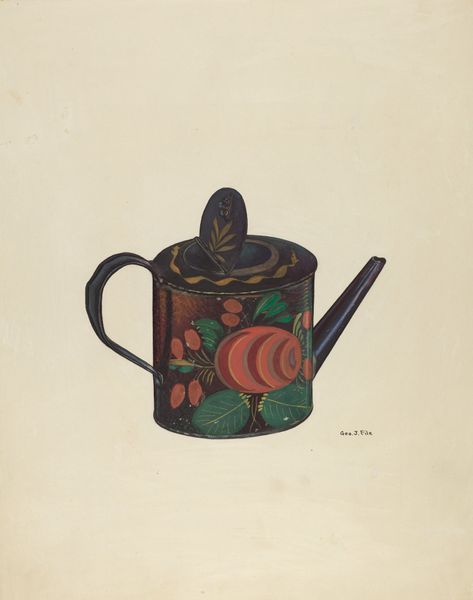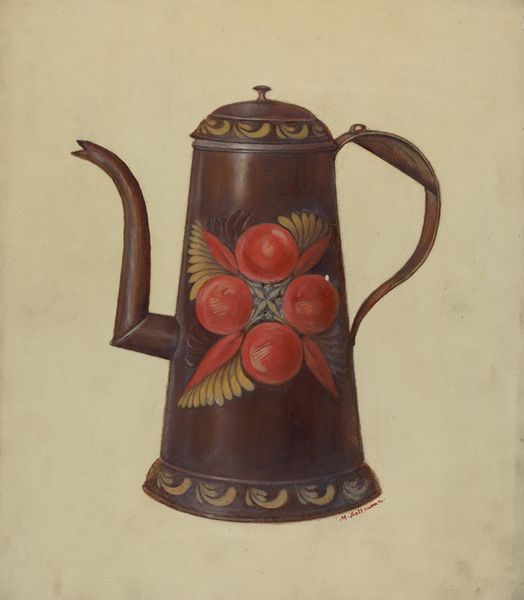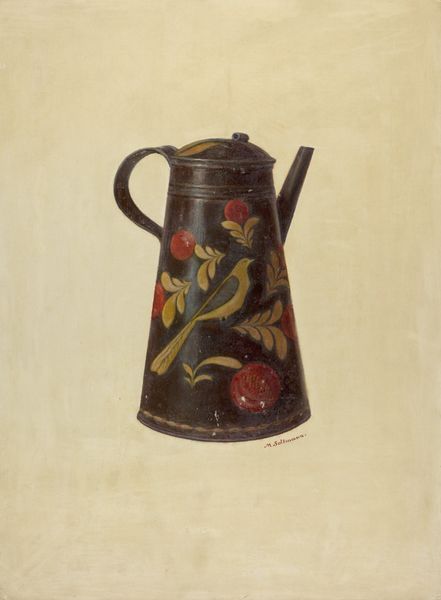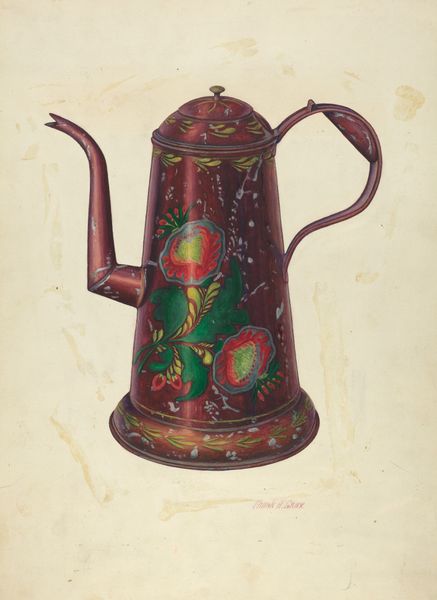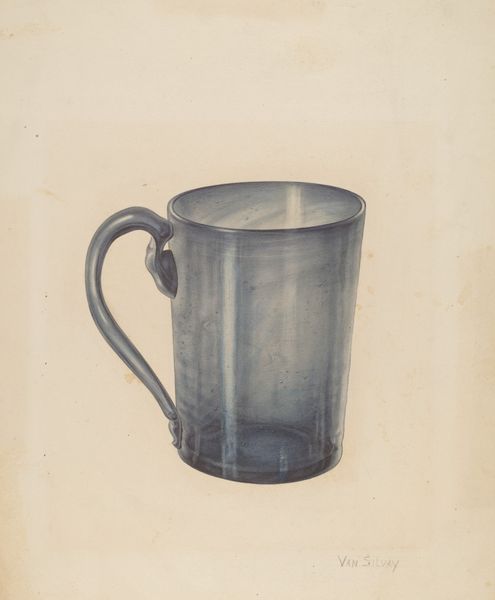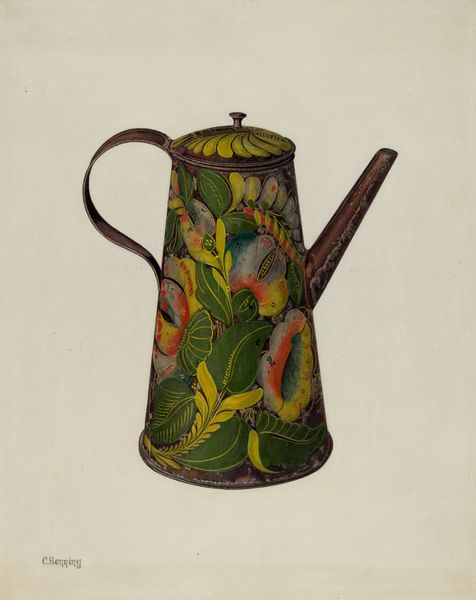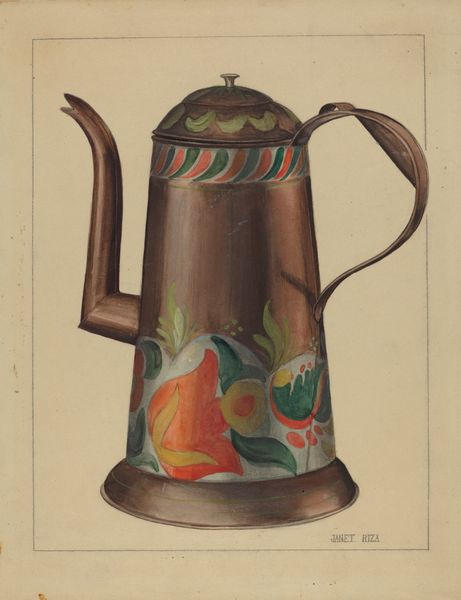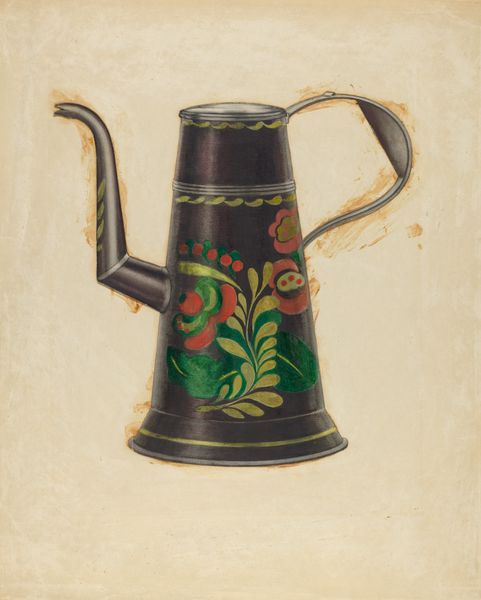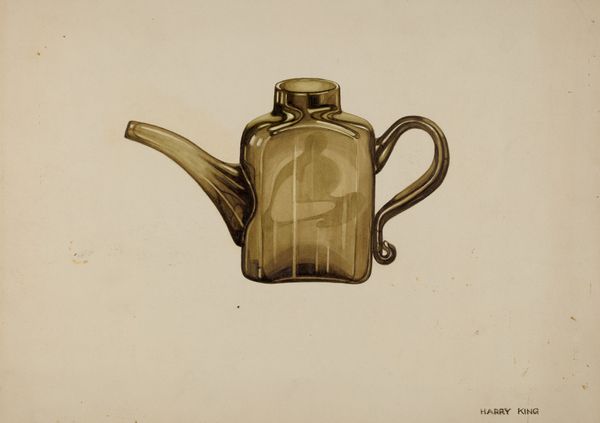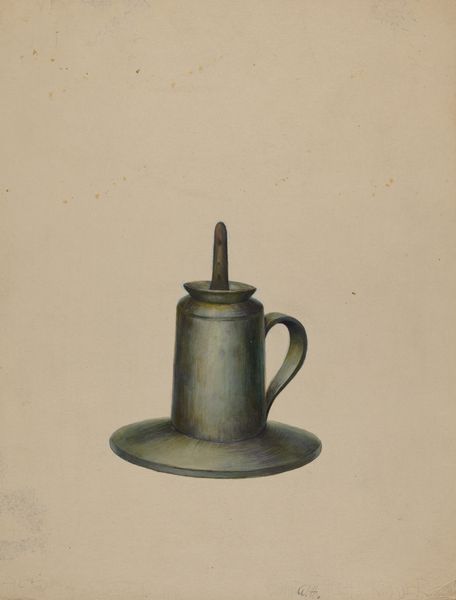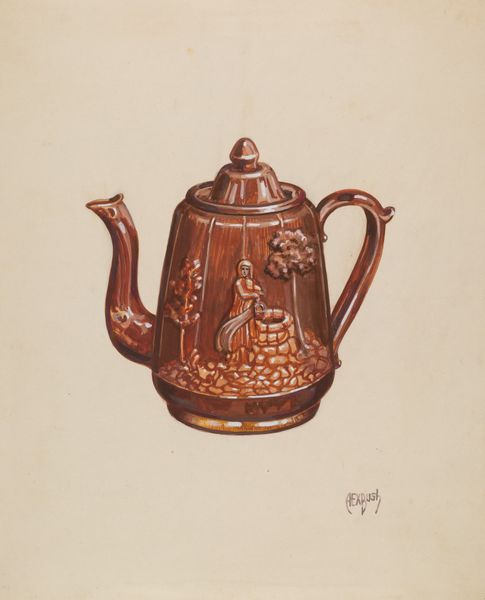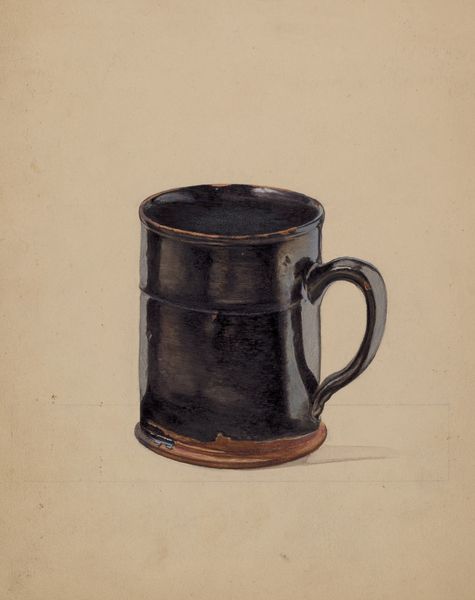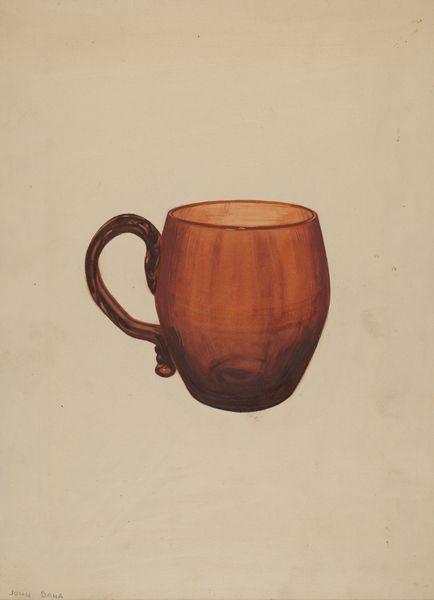
drawing
#
drawing
#
folk-art
#
watercolor
Dimensions: overall: 50.4 x 37.6 cm (19 13/16 x 14 13/16 in.) Original IAD Object: 7 1/8" wide; 9 3/4" high
Copyright: National Gallery of Art: CC0 1.0
Editor: So, this is Max Soltmann’s "Lamp and Water Heater" from around 1937, a watercolor drawing. I'm immediately drawn to the floral decoration on this very practical object. What symbols are working here? Curator: I'm struck by the attempt to domesticate, perhaps even sanctify, the mundane. The floral motifs speak to a yearning for beauty, a way to imprint personal or communal identity onto the tools of daily life. Consider the lamp itself—a beacon. What does that beacon represent within the context of folk art and everyday life? Editor: Warmth, light, hope, maybe? It feels like more than just a functional object, imbued with a certain optimism. Curator: Precisely! The lamp and water heater are vessels, but what do they contain? Beyond their utilitarian purposes, consider them as symbols of comfort, domesticity, and perhaps even spiritual well-being. The floral decoration becomes not just aesthetic, but talismanic, imbuing these objects with protective or hopeful energies. The artist uses the symbol of the domestic to tell us about how people thought. Editor: That's fascinating. So, the everyday objects become a mirror reflecting a culture's values and aspirations? Curator: Exactly! It becomes a way to keep certain thoughts and intentions active within the household through imagery. This folk-art drawing reveals this dialogue, with visual cues helping create and keep meaning. Editor: It’s really made me think differently about how much objects around us speak volumes! Curator: Me too; I hadn’t really looked at the way these practical objects help a culture sustain and pass down intentions over time.
Comments
No comments
Be the first to comment and join the conversation on the ultimate creative platform.
